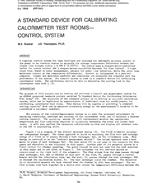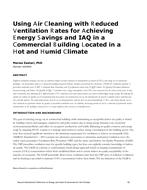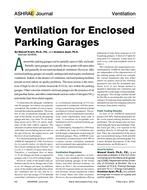The annual costs of energy and maintenance in running a heating, ventilating, and air-conditioning (HVAC) system and life-cycle costs (LCC) of investments for improving air quality in an office building were compared with the resulting revenues from increased office productivity as a consequence of improved worker performance; benefits from reduced health costs and absence due to sickness were not included. The building was simulated in cold, moderate, and hot climates. It was ventilated by a constant air volume (CAV) system with heat recovery and by a variable air volume (VAV) system with an economizer. The air quality was improved by increasing the outdoor air supply rate and by reducing the pollution loads. These upgrades involved increased energy and HVAC maintenance costs, first costs of an HVAC system, and building construction costs. But the additional investments were highly cost-effective. The annual benefit due to improved air quality was up to 115 times higher than the increase in annual energy and maintenance costs. LCC analysis showed that productivity benefits resulting from better indoor air quality were up to 60 times higher than the increased costs; the simple and discounted payback times were below 2.1 years, and the annual rate of return was four to seven times higher than the minimum rate set at 3.2%. Present data, although obtained by simulations, constitute a strong incentive for providing indoor air of a quality that is better than the minimum levels required by present standards.
Citation: Symposium, ASHRAE Trans. vol. 111, pt. 2, paper no. DE-05-3-2, p. 476-484
Product Details
- Published:
- 2005
- File Size:
- 1 file , 1.3 MB
- Product Code(s):
- D-26977


